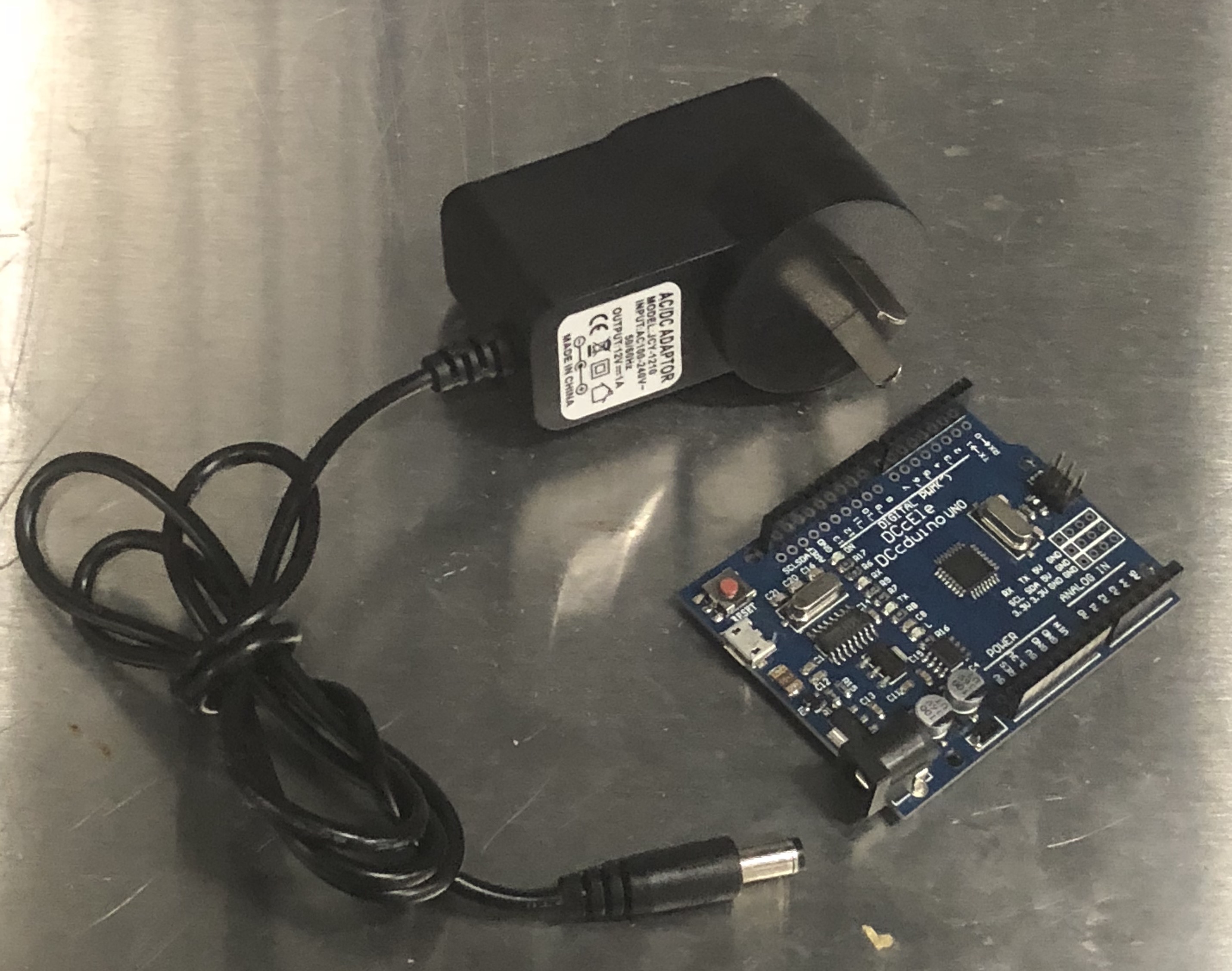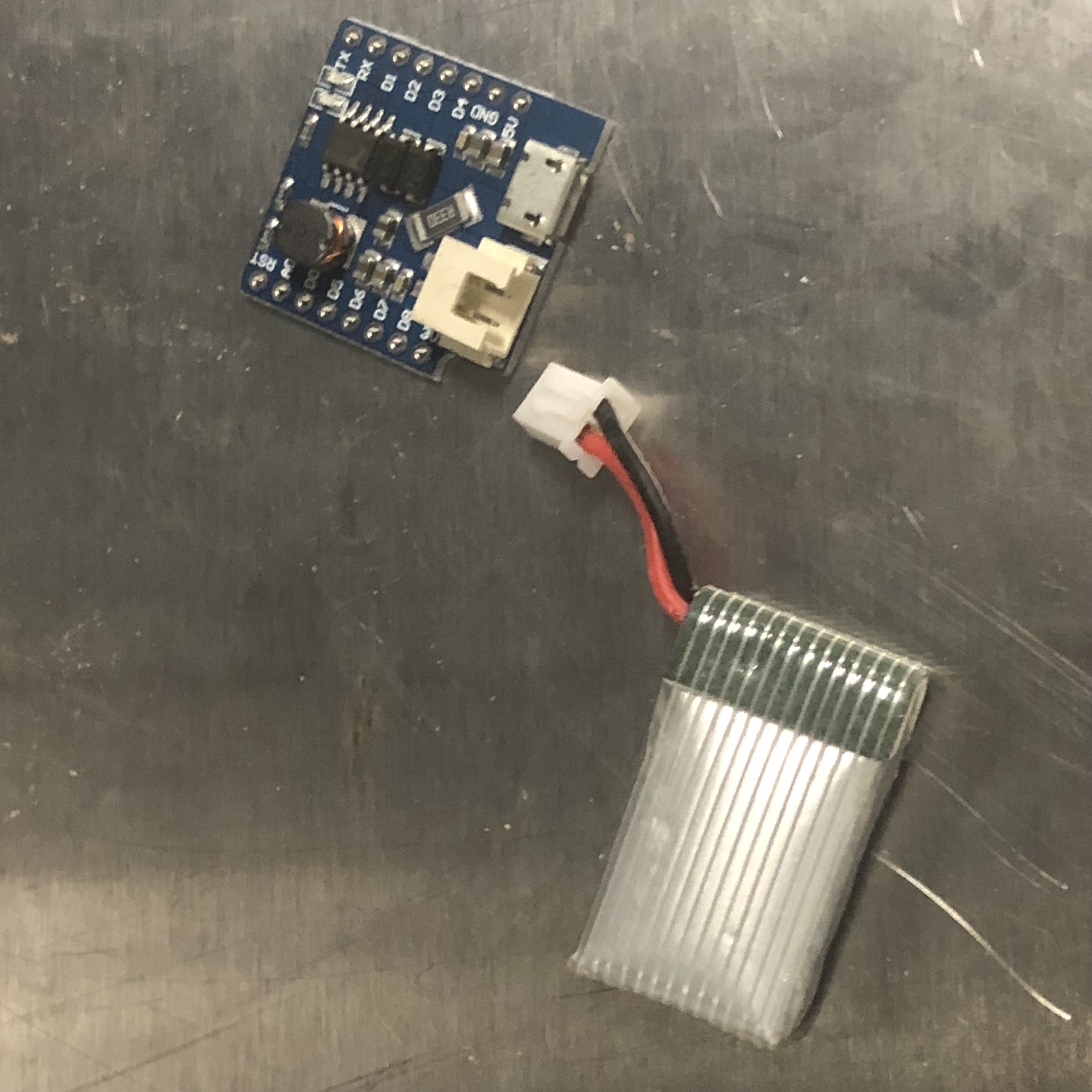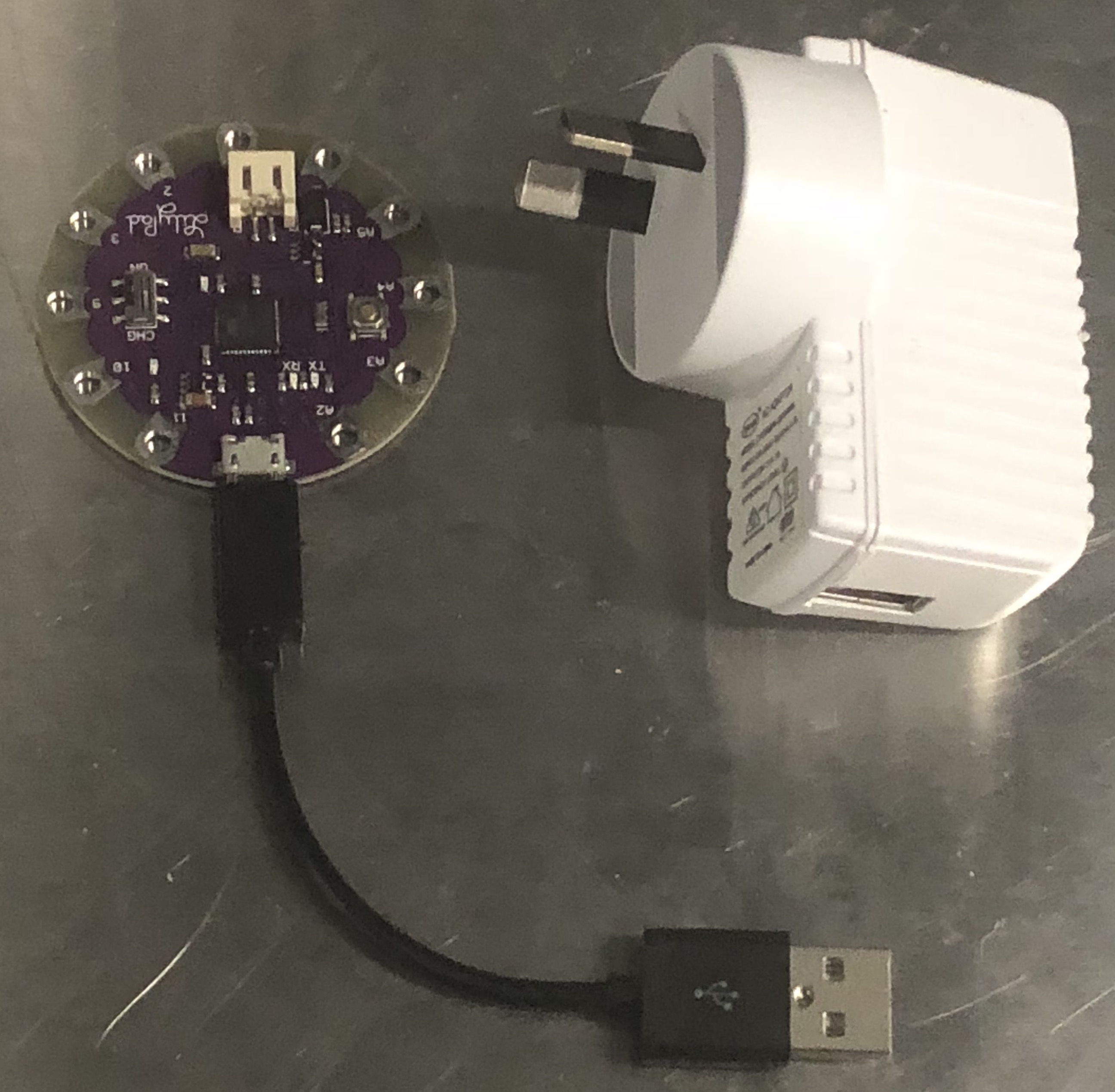Circuits + Components
Electric Circuits
We use a number of tools to create, manipulate and measure the flow of electricity.
We assemble a supply of electric power, some wires and some Electronic Components into an Electronic Circuit that does some useful job.
Rembember that a circuit is a path from the positive wire of a power supply, through some components that consume, convert or redirect the energy carried by the electrons, and back to the negative wire of the power supply.
- Resource: Sparkfun What is a Circuit
- Resource: Sparkfun Electric Power
Power supplies
Humanity’s first experiences with electicity were lightning, and the smaller but similar effect produced by rubbing a piece of amber or rubber, or combing the hair of a small child. This was “Static Electricity” where friction resulted in a temporary imbalance between the number of protons and electrons in a substance. Static electricity is not very useful to us, because it only lasts a brief moment.
The science of electronics began around 1800, with Luigi Galvani and Alessandro Volta in Italy. Galvani discovered that electricity could be produced via the interaction of acids and metals, and Volta invented what came to be called the Voltaic Pile, or in English the “Electric Cell”. This is a device that converts a chemical reaction between acids and different kinds of metal plates into an electric potential (or Voltage, named for Volta). Today we connect one or more cells to form a “Battery of cells” (or simply a Battery) which is a convenient portable source of electric charge.
In 1831 Englishman Michael Faraday discovered that an electric potential can also be created by moving a coil of wire inside an magnetic field (or vice-versa). This effect is the source of our household power, which is generated at power stations that use turbines (turned by water, wind or steam) to produce electric current.
We can also generate electricity using Photovoltaic cells which (as the name implies) convert light (photons) from the sun into electric voltage.
Polarity and Direct Current
Any source of power will have two connections (be they plates, wires, screw terminals, pins or poles), one positive and one negative.
On a battery or solar cell these are fixed, one is always positive, the other is always negative. You will see the polarity marked on the battery or cell. These devices provide Direct Current that always flows in the same direction.
There are several different kinds of chemical battery, powered by different chemical reactions and containing different metals. The voltage produced by a cell is often determined by the chemistry in use. For example the common “AA Battery” is either a Carbon-Zinc or Alkaline-Manganese cell and operates at 1.5 Volts. Lithium-Ion cells as used in mobile phones and other handheld devices operate at 3.7 Volts. The lead-acid cells used in motor vehicles produce two Volts per cell, but are most often seen in batteries of six, producing 12 Volts.
Our household power, which is produced by rotating coils inside magnetic fields, is Alternating Current which actually reverses direction several times each second (50 cycles per second, or “50 Hertz (Hz)” in Australia). Household voltage is at 220 Volts, but can be transformed to higher or lower voltages during transmission and distribution.
While it is more convenient to carry Alternating current over long distances (it is easier to change the voltage of Alternating Current, and the higher the voltage used in transmission lines, the less energy is lost to resistance), most of the time we want Direct current at a safe low voltage, so we use converters. The small “power bricks” that we use for many of our appliances do two things
* They convert (or "rectify") household Alternating Current into Direct
Current
* They lower the voltage from the household 220V supply, to a
safer level such as 12V or 5V.
Many computers (and all computer peripherals using the Universal Serial Bus connection (USB)) operate at 5 Volts. Modern micro-circuits such as cell phones, laptop computers and many of the sensors we’ll work with operate at 3.3 volts, partly because it is then more convenient to power them from a single Lithium-Ion cell.
- Resource: Sparkfun Battery Technologies
- Resource: Sparkfun How to power a project
- Resource: Sparkfun What is Polarity
Connecting power
Chemical cells are often designed to be connected using springs (either coil-type or leaf-type). Sometimes several cells are held in a “battery pack” which itself has wires.
Wires from batteries amay be connected via various means:
* Screw terminals
* Multi-pin "Jack connectors" (aka connectors or jacks)
* "Alligator clips"
The connectors you will encounter most often are
Barrel connectors
Many power bricks use a “barrel” connector which is designed to provide a firm connection held in place by springs in the socket, and to make it difficult to accidentally connect the two poles into a “Short Circuit” which could result in fire.

JST connectors
(Like Kleenex, the term JST comes from the Japan Solderless Terminal Mg Co., and is loosely applied to the small white two-pin connectors you will see on many electronic devices)

USB connectors
The Universial Serial Bus, designed to replace the complicated collection of incompatible plugs used on computers in the past, is a four-pin connector, two power pins and two pins used for data communications. (Some newer revisions of USB have more pins to allow faster communication).
USB has come to be used as a convenient source of power for charging phones, hand held games, sensors, lights and other small circuits.

Switches
Switches are used to Make or Break a circuit, to permit or interrupt the flow of electrons in a circuit.
Un-plugging the power supply is the simplest form of switching, but we use a variety of switches to make things more conveninent.
For example:
- Toggle or rocker switches (as seem in household lighting)
- Slide switches
- Push-button switches (often “momentary action” that make when pushed and break when released)
- Capacitive switches which react to the electric field of the human
body (as used in touch-screens)
Resistors
A switch can be thought of a wire that alternately has (almost) no resistance, or infinite resistance.
We sometimes need connections of particular resistance in order to control how much current flows through a circuit. The classic example is controlling the brightness of a light. The light-emitting diodes used in many modern devices can be damaged if too much current flows, so resistors are used to control the current, using the calculations of Ohm’s Law to understand that if we apply a certain Voltage to a circuit with a particular resitance, then the current that flows can be no more than the I=V/R described by Ohm’s Law.
Capacitors
Switching circuits on and off can deplete the voltage in a circuit temporarily, causing “dips” in the voltage at some points. A capacitor is a device like a tiny battery that can store charge for a brief time. Capacitors are used to “smooth out” voltage and store it temporarily. These devices can be used for timing (making a light blink, for example, as a capacitor drains and refills) and for bootsting voltage (used in many voltage converters).
Diodes (and LEDs)
Diodes only let current flow in one direction, like a valve. They are used to Rectify Alternating Current into Direct Current.
Some kinds of diodes have an interesting side-effect of producing or reacting to light. This has been refined to produce the Light-Emitting-Diode (LED) which forms the basis of most phone and TV screens, and is increasingly used in household lighting.
Transistors
The Transistor (whose name comes from “Transfer Resistor”) is a device where the resistance between two pins can be controlled by the voltage at a third pin. This allows us to fashion an “electronic switch” that has no moving parts, and thus can switch off and any many thousands or millions of times per seconds. A transistor can also Amplify current by using a small voltage to control the resistance of a circuit carrying a larger voltage.
The operation of transistors relies on the “Semiconductor effect” where substances such as silicon with trace amounts of certain other elements (such as Arsenic, Gallium or Germanium) can change their resistance in the presence of an electric field (for complex reasons involving Quantum Mechanics).
All modern computers consist of millions of transistors connected in intricate ways. Computers contain so many transistors, that they almost never use a single transistor on its own, rather we fashion many transistors together onto a single slice (or “chip”) of Silicon dioxide glass, which we term an “Integrated Circuit” (or sometimes “silicon chip”).
Motors, Speakers and Inductors
Whenever electrons move they produce a magnetic field.
We can use two or more magnetic fields (produced from coils of wire, or from a mixture of coils and permanent magnets), and the repulsion or attraction caused by these interacting magnetic fields, to turn electricity into motion.
A motor turns in a circle because coils are turned on and off in such a way as to cause an Armature to rotate in the changing magnetic field effected by the coils.
A speaker works by moving the tip of a paper cone back-and-forward (to produce the pressure waves we experience as sound) with the aid of a permanent magnet and a fine coil of wire glued to the paper.
The reverse effect to a speaker can be useful, a moving coil within a magnetic field gives us a Microphone which converts sound waves into a varying electrical current.
Since a magnetic field can create current, and current creates a magnetic field, a coil can in some circumstances affect itself. When power is added to a coil it briefly resists the flow as the magnetic field changes, and when power is removed it briefly boosts the current as the field changes again. Coils used in this way are termed Inductors and they often form part of the voltage conversion circuitry in power bricks and other devices.